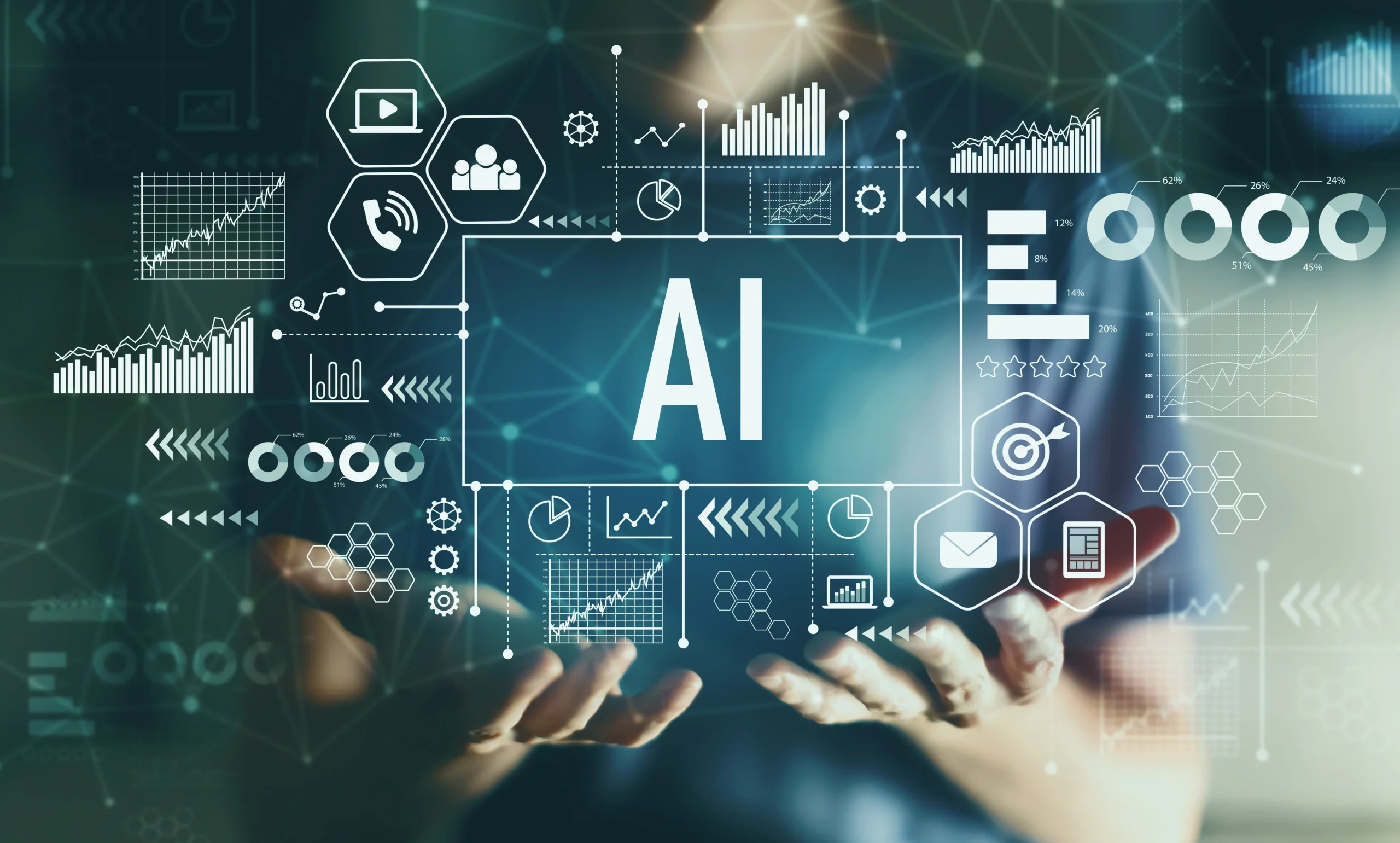
🌐 In the ever-evolving digital landscape, building a website that stands out requires more than 🎨 aesthetic appeal and 🔧 functional design. To remain competitive, websites must also leverage 🤖 artificial intelligence (AI) to enhance 🧑💻 user experience, improve 🔍 SEO, and drive 💰 profitability. Whether you’re a 🛍️ small business owner, a freelancer, or an aspiring entrepreneur, understanding how to build an AI-optimized website can be a 🎯 game-changer for your online presence.
📝 This guide walks you through the process of creating a profitable AI-optimized website in 2025, covering everything from 🛠️ initial planning and AI integration to 💵 monetization strategies and 🔄 ongoing optimization.
🤔Why AI Optimization Matters
🤖 AI has transformed how websites operate and engage with users by enabling features like 🎯 personalized recommendations, 🤖 automated customer support, and 📈 dynamic content updates. These advancements are driven by breakthroughs in 🧠 natural language processing, 🧬 machine learning algorithms, and 📊 real-time data analytics, making it easier than ever to deliver tailored experiences and streamline operations. By harnessing AI tools, you can:
Enhance User Experience: 🧭 Personalize interactions and streamline navigation.
Boost SEO Performance: 📈 Improve search engine rankings through AI-driven content analysis and optimization.
Increase Conversion Rates: 🔮 Use predictive analytics to target user behavior and drive 🛒 sales.
Streamline Maintenance: 🤖 Automate routine tasks like updates and troubleshooting.
💡 Websites that fail to integrate AI risk being left behind in an increasingly competitive market. Let’s explore how you can incorporate AI to maximize your site’s potential.
🗺️ Step 1: Define Your Website’s Purpose and Audience
📝 Before diving into AI tools and technologies, establish a clear purpose and identify your target audience. Answer the following questions:
What is the goal of your website?
🛍️ Selling products?
📇 Generating leads?
📰 Sharing information?
Who is your target audience?
👶 Age, demographics, and interests.
📱 Online behavior and preferences.
🧩 Understanding these foundational elements will guide your decisions on 🎨 design, 🖋️ content, and 🤖 AI tool selection by ensuring that chosen tools align with your audience’s needs and the website’s goals. For instance, a clear understanding of your target demographic can help you select AI tools that excel in 🧑🤝🧑 personalization, while a focus on your website’s purpose can determine which performance optimization tools will deliver the best results.
🔧 Step 2: Choose the Right Platform
⚙️ Selecting the right platform is critical. Many modern 🖥️ website builders offer built-in AI tools or compatibility with AI integrations. Popular choices include:
WordPress: Highly customizable with AI plugins like RankMath for 🔍 SEO and ChatGPT for ✍️ content creation.
Shopify: Excellent for 🛒 e-commerce with AI tools like Kit and AI-powered product recommendations.
Wix: User-friendly with AI features for 🎨 design and personalization.
💡 Consider your 🧑💻 technical expertise, 💰 budget, and scalability when making your choice.
🎨 Step 3: Leverage AI for Design and Development
🤖 AI can simplify the 🎨 design and 🛠️ development process, making it accessible even to those with minimal 🧑💻 technical skills. For example, a 🏪 small business owner with no coding experience can use tools like Wix ADI to create a fully functional and visually appealing website in hours. By answering a few simple questions about their business, the AI generates a tailored design, complete with personalized content, saving 🕒 time and effort compared to traditional methods.
AI-Powered Design Tools:
Wix ADI (Artificial Design Intelligence): Automatically creates a customized website based on your preferences and industry.
Canva: Offers templates and design elements enhanced by 🤖 AI recommendations.
Code Generation:
💻 For more advanced users, tools like GitHub Copilot can assist in generating clean, efficient code.
Testing and Debugging:
🔍 Use AI-powered testing tools like Testim or BrowserStack to identify and fix 🐞 bugs quickly.
✍️ Step 4: Optimize Content with AI
📚 Content is king, and 🤖 AI can take your website’s content strategy to the next level. For instance, a ✈️ travel website used AI-generated blogs to highlight lesser-known destinations, leading to a 40% 📈 increase in organic traffic within three months. By automating the content creation process, the website was able to maintain a steady flow of high-quality articles that resonated with its audience, proving the power of AI in boosting 📊 engagement and performance.
Content Creation:
Use tools like ChatGPT to generate engaging ✍️ blog posts, 📄 product descriptions, or landing page copy.
Tailor content to specific audiences with AI’s ability to understand 🎭 tone and context.
SEO Optimization:
Leverage AI-driven platforms like Surfer SEO or SEMrush to identify 🏆 high-performing keywords and optimize your content.
Create 📝 meta descriptions, 🏷️ title tags, and 🖼️ alt text automatically with AI tools.
Dynamic Content Personalization:
Tools like Dynamic Yield can tailor content to individual user preferences, increasing 🛍️ engagement and conversions.
🤖 Step 5: Integrate AI Chatbots and Virtual Assistants
💬 AI chatbots have become essential for 💼 customer engagement and support. Popular options include:
Tidio: Provides automated responses and integrates with multiple platforms.
Drift: Offers conversational marketing tools to drive 🌱 lead generation.
Intercom: Combines customer support with 🛠️ sales and marketing features.
Benefits:
🕒 24/7 customer support.
🧑💻 Personalized user experiences.
📈 Increased efficiency in handling queries.
📊 Step 6: Implement AI Analytics for Insights
Understanding 🧑🤝🧑 user behavior is critical to improving your website’s 📈 performance. AI analytics tools provide actionable 🔍 insights:
Google Analytics 4: Enhanced by 🤖 AI, it offers predictive metrics and deeper 📊 user insights.
Hotjar: Visualizes user behavior through 🔥 heatmaps and session recordings.
Heap: Automatically captures and analyzes all user interactions.
💡 Use these insights to make 🧩 data-driven decisions for layout adjustments, content updates, and marketing strategies.
⚡ Step 7: Focus on Speed and Performance
⚡ Website speed significantly impacts 🧑💻 user experience and 🔍 SEO. AI tools can optimize performance:
CDNs (Content Delivery Networks): Services like Cloudflare use 🤖 AI to optimize content delivery and reduce load times.
Image Compression: Tools like TinyPNG and Optimole use 🤖 AI to compress images without sacrificing quality.
Additional Tips:
Minimize 🔌 plugins and scripts.
Use AI-powered caching tools to improve 🌐 server response times.
💰 Step 8: Monetize Your AI-Optimized Website
An AI-optimized website offers numerous 💵 monetization opportunities:
E-Commerce:
Use AI-driven product recommendation engines to boost 🛒 sales.
Offer dynamic pricing based on user behavior and market trends.
Affiliate Marketing:
Create targeted content using 🤖 AI to drive affiliate revenue.
Advertising:
Use AI platforms like Google AdSense to optimize ad placement and revenue.
Subscription Models:
Provide 🎯 personalized premium content or services to subscribers.
🔄 Step 9: Continuously Optimize with AI
An AI-optimized website requires ongoing updates and improvements:
A/B Testing: Tools like Optimizely use 🤖 AI to test variations and identify what works best.
User Feedback: Analyze AI-driven sentiment analysis from surveys and reviews.
Security Enhancements: AI tools like Sucuri and Darktrace protect your website from 🛡️ cyber threats.
🌟 Future Trends in AI-Optimized Websites
As 🤖 AI continues to evolve, expect to see advancements like:
🎙️ Voice Search Optimization: Websites will become increasingly compatible with voice-driven interactions, particularly in industries like 🛒 e-commerce where hands-free shopping is gaining traction.
🎥 AI-Generated Multimedia: For example, AI tools may enable educators to generate interactive learning modules on-the-fly, or help marketers create tailored video ads based on user data.
✨ Hyper-Personalization: Imagine ✈️ travel websites that not only suggest destinations but dynamically adjust itineraries, activities, and pricing in real-time based on individual user preferences and behavior.
🔮 Predictive User Engagement: AI could help platforms anticipate user needs and deliver recommendations before users even ask, revolutionizing customer satisfaction in industries like 🏥 healthcare or 💳 finance.
💡 These trends promise to redefine how users interact with websites and open up exciting new opportunities for developers, designers, and entrepreneurs.
🏁 Conclusion
Building a profitable AI-optimized website in 2025 involves a blend of strategic planning, the right tools, and ongoing innovation. From leveraging AI for personalized content and streamlined design to integrating advanced analytics and chatbots, the possibilities are vast. With AI at your side, you can create a site that not only attracts users but also retains and converts them efficiently.
By staying updated on emerging trends and advancements in AI technology, you ensure your website remains competitive in an ever-evolving digital landscape. Whether you’re a small business owner, freelancer, or entrepreneur, embracing AI is no longer optional—it’s a necessity for online success. Take the first step today, and let AI guide you toward building a website that is not only profitable but also future-ready.














